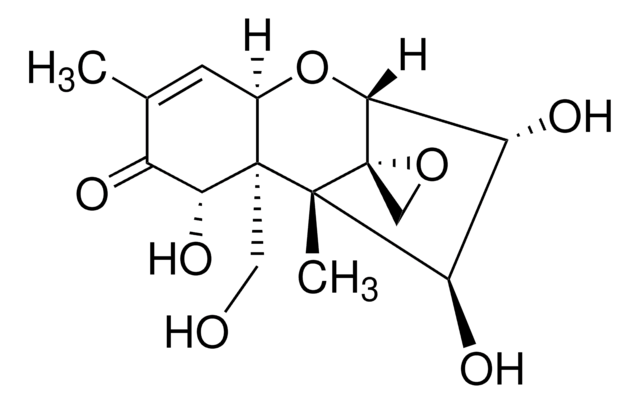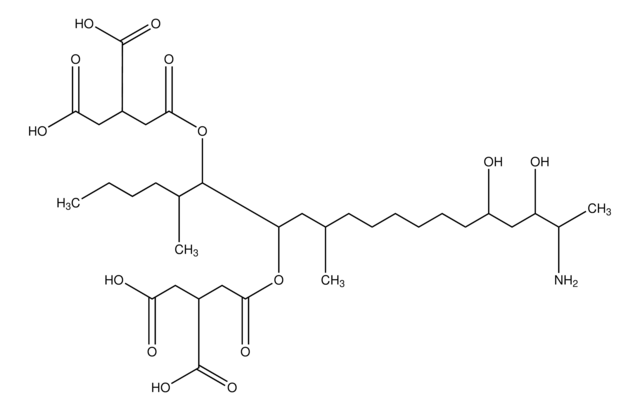34135
Deepoxy-deoxynivalenol solution
~50 μg/mL in acetonitrile, analytical standard
Sinónimos:
3α,7α,15-Trihydroxy-trichothec-9,12-dien-8-one solution, DOM-1
About This Item
Productos recomendados
grado
analytical standard
Nivel de calidad
caducidad
limited shelf life, expiry date on the label
concentración
~50 μg/mL in acetonitrile
técnicas
HPLC: suitable
gas chromatography (GC): suitable
aplicaciones
cleaning products
cosmetics
food and beverages
personal care
formato
single component solution
temp. de almacenamiento
−20°C
cadena SMILES
CC1=C[C@H]2O[C@@H]3[C@H](O)C[C@@](C)(C3=C)[C@@]2(CO)[C@H](O)C1=O
InChI
1S/C15H20O5/c1-7-4-10-15(6-16,13(19)11(7)18)14(3)5-9(17)12(20-10)8(14)2/h4,9-10,12-13,16-17,19H,2,5-6H2,1,3H3/t9-,10-,12+,13-,14+,15-/m1/s1
Clave InChI
ZACLXWTWERGCLX-MDUHGFIHSA-N
Descripción general
Aplicación
Nota de análisis
Palabra de señalización
Danger
Frases de peligro
Clasificaciones de peligro
Acute Tox. 4 Dermal - Acute Tox. 4 Inhalation - Acute Tox. 4 Oral - Eye Irrit. 2 - Flam. Liq. 2
Código de clase de almacenamiento
3 - Flammable liquids
Clase de riesgo para el agua (WGK)
WGK 2
Punto de inflamabilidad (°F)
35.6 °F
Punto de inflamabilidad (°C)
2 °C
Equipo de protección personal
Eyeshields, Faceshields, Gloves, type ABEK (EN14387) respirator filter
Choose from one of the most recent versions:
¿Ya tiene este producto?
Encuentre la documentación para los productos que ha comprado recientemente en la Biblioteca de documentos.
Nuestro equipo de científicos tiene experiencia en todas las áreas de investigación: Ciencias de la vida, Ciencia de los materiales, Síntesis química, Cromatografía, Analítica y muchas otras.
Póngase en contacto con el Servicio técnico









